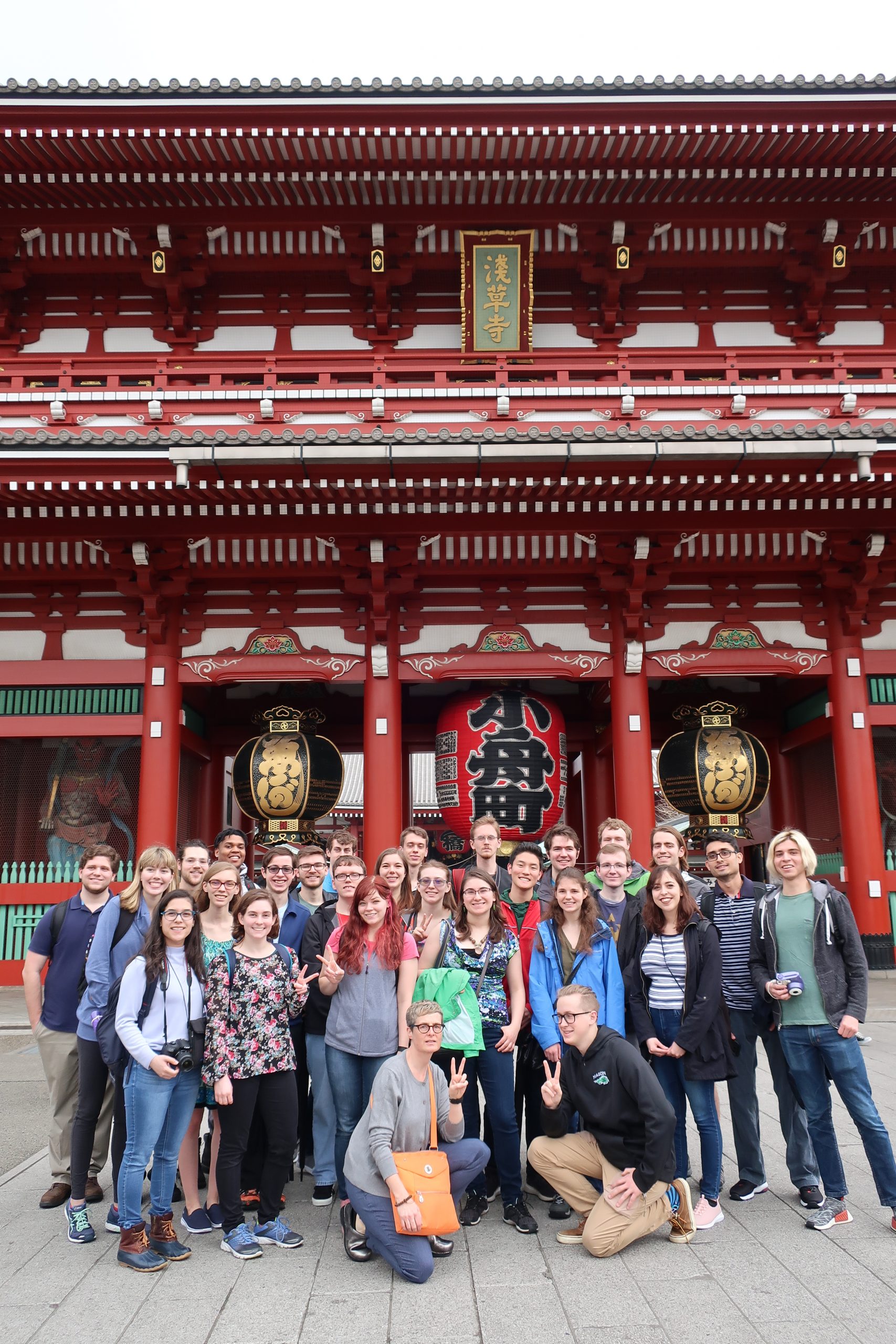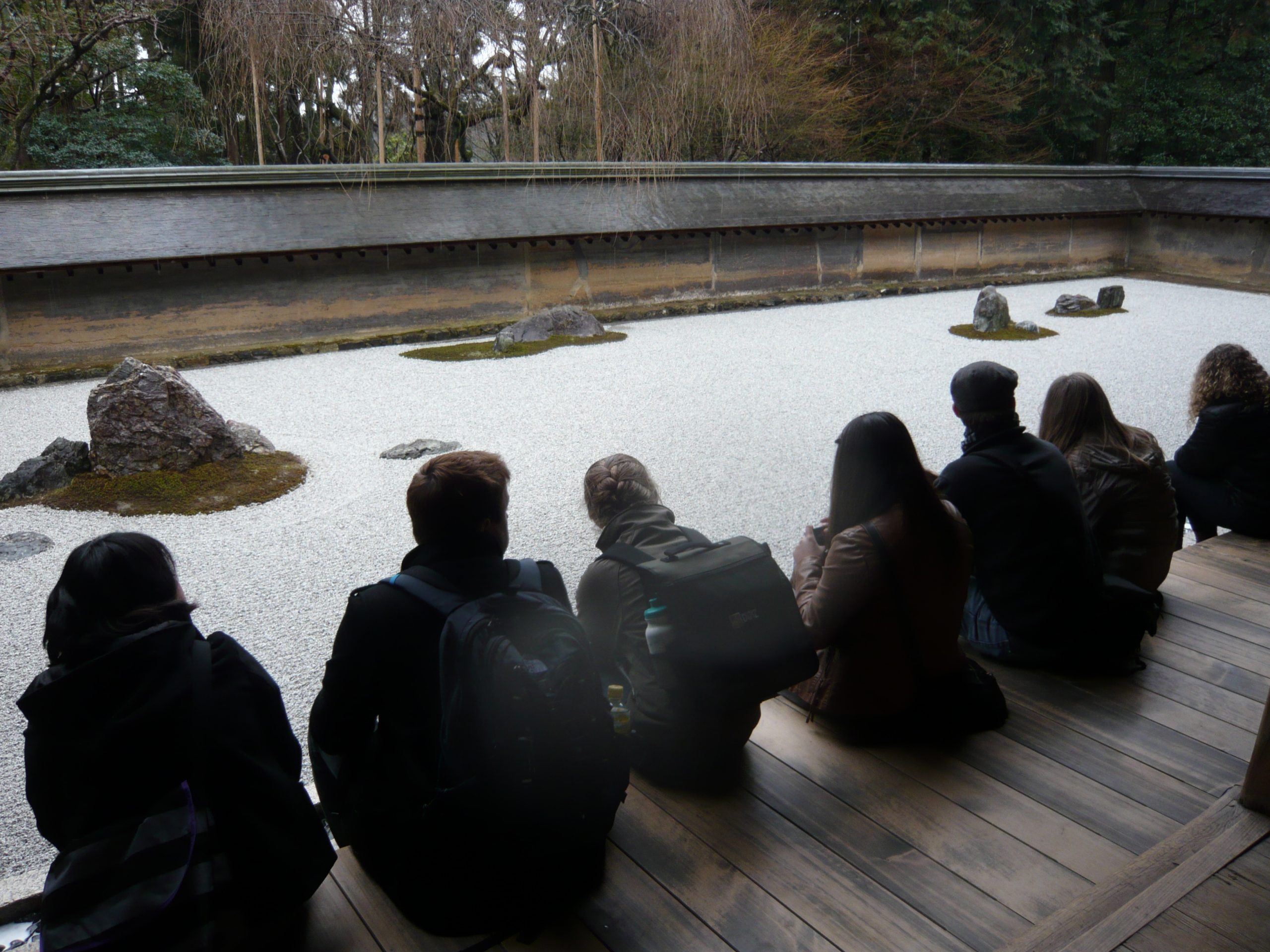Sustainable Tourism and Cultural Experiences
Jennifer Prough ’91, Ph.D., interim dean of Christ College — The Honors College and Professor of Humanities and East Asian Studies, was recently named the recipient of the Northeast Asia Council Short-term Research Grant funded by the Japan-U.S. Friendship Commission. The grant will help fund research into her latest article “Boom, Bust and Back, Tourism Challenges in Contemporary Kyoto,” an in-depth look into the state of the resurgence of tourism in Japan after the COVID-19 pandemic.
Professor Prough’s career as an anthropologist has focused on Japan, including the country’s popular culture, globalization, and tourism.
“I think Japan is an interesting place to study because it’s so culturally distinct, but a significant global economy ,” Professor Prough says.
Kyoto was the capital of Japan from 794 until 1868, and was spared most of the destructive consequences of World War II. While original wood buildings degrade naturally over time, and many modern buildings have been constructed since, officials have been diligent in preserving the traditional spirit of the area’s historic districts. Regulations dictate that the natural hills surrounding three sides of the city must not be blocked from view in the historic districts, and many of the hallmarks of urban areas we take for granted are forbidden.
“You can’t have gaudy neon signs in the district,” Professor Prough says. “Even McDonald’s changed their sign to orange and brown in those districts.”
Kyoto’s emphasis on tradition has always been a major selling point for the city, but this took on new significance at the turn of the millennium, as tourists began seeking experiences rather than guided sightseeing on their travels. During their visits to Japan between 2012 and 2020, the city’s status as “the heart of Japan” was evident to Valpo students brought over by Professor Prough.
“We’d spend some time in Tokyo and some time in Kyoto, and when we came back, students would remember Tokyo for all the things we all know: it’s big, modern, fast, all glass and new,” she says. “In Kyoto, they would remember the wood buildings, quaint alleyways, and how it was so traditional, even though Kyoto has lots of concrete eyesores, modern buildings, and ugly power lines, and there are wooden buildings and small lanes in Tokyo.”
Prior to her current project, Professor Prough wrote the book “Kyoto Revisited: Heritage Tourism in Contemporary Kyoto” (University of Hawai’i Press, 2022), capturing a snapshot of the region in the midst of an immense tourism boom. In 2013, Kyoto saw more tourists than New York City, and an average of 55 million tourists flooded the city of 1.5 million on an annual basis. According to Professor Prough, the former national capital represents something special to both Japanese and overseas visitors.
“It’s really where international, and even domestic tourists go to really ‘feel the heart’ of Japan in some ways,” Professor Prough says. “My book was about how the city was trying to craft heritage experiences for tourists today.”
Just as the book was approaching publication however, the situation underwent a radical shift. The COVID-19 pandemic resulted in Japan closing its borders, and a huge chunk of the tourist population vanished practically overnight. For Professor Prough, the scene described in her book was suddenly a thing of the past.
“Anthropologists aren’t used to our books becoming historical artifacts right away,” Professor Prough says. “So, it ended up capturing a snapshot of this huge tourism boom.”
During the country’s lockdown, the tourism industry shifted gears, appealing to Japanese residents on the grounds that — if they visited then — Kyoto would be free of the overwhelming crowds that usually took over the historic districts. Professor Prough published an article during the pandemic, capturing a snapshot of the city during this tourism recession titled (get title). Now, her new project will explore a Kyoto that’s once again open to an international crowd, and how post-pandemic tourism may differ from what one could expect before.
“Are the kimono rentals back? Did more Japanese tourists adopt the kimono? Are there other new experiences, or are they backing off from that because it became too much in the hot areas?” Professor Prough asks.
One of the major challenges for Japanese officials is creating a sustainable tourism destination. To that end, the city is emphasizing values such as harmony between tourists and residents, infectious disease safety, and environmental preservation. Tourists are also being given guides on acceptable behavior and etiquette to help avoid creating friction. Given the revenue generated by the tourism industry, preventing friction between visitors and efforts at tradition and preservation is essential.
“They need these tourists for the economy, but it’s a complicated economy to cultivate,” says Professor Prough.
Professor Prough’s third written project on Kyoto tourism will act as a third snapshot of how the industry operates in the city, complimenting her pre-pandemic and mid-pandemic works. Professor Prough will be in Kyoto for 10 days during the summer with her husband and child (who has just finished their first year in college). The Northeast Asia Council Grant provides Professor Prough with $3,000 to assist with travel and lodging.


